How to Develop Self-Help Skills in Autistic Teens
Empowering Autistic Teens Toward Independence: A Guide for Caregivers and Educators

Understanding the Importance of Self-Help Skills in Autism
Self-help skills are essential for fostering independence and improving quality of life for autistic adolescents. Developing these skills enables teens to participate more fully in daily routines, social interactions, and community activities. This comprehensive guide explores effective strategies, available resources, and best practices for supporting self-help skill development tailored to each individual's needs.
The Significance of Self-Help Skills for Autistic Youth
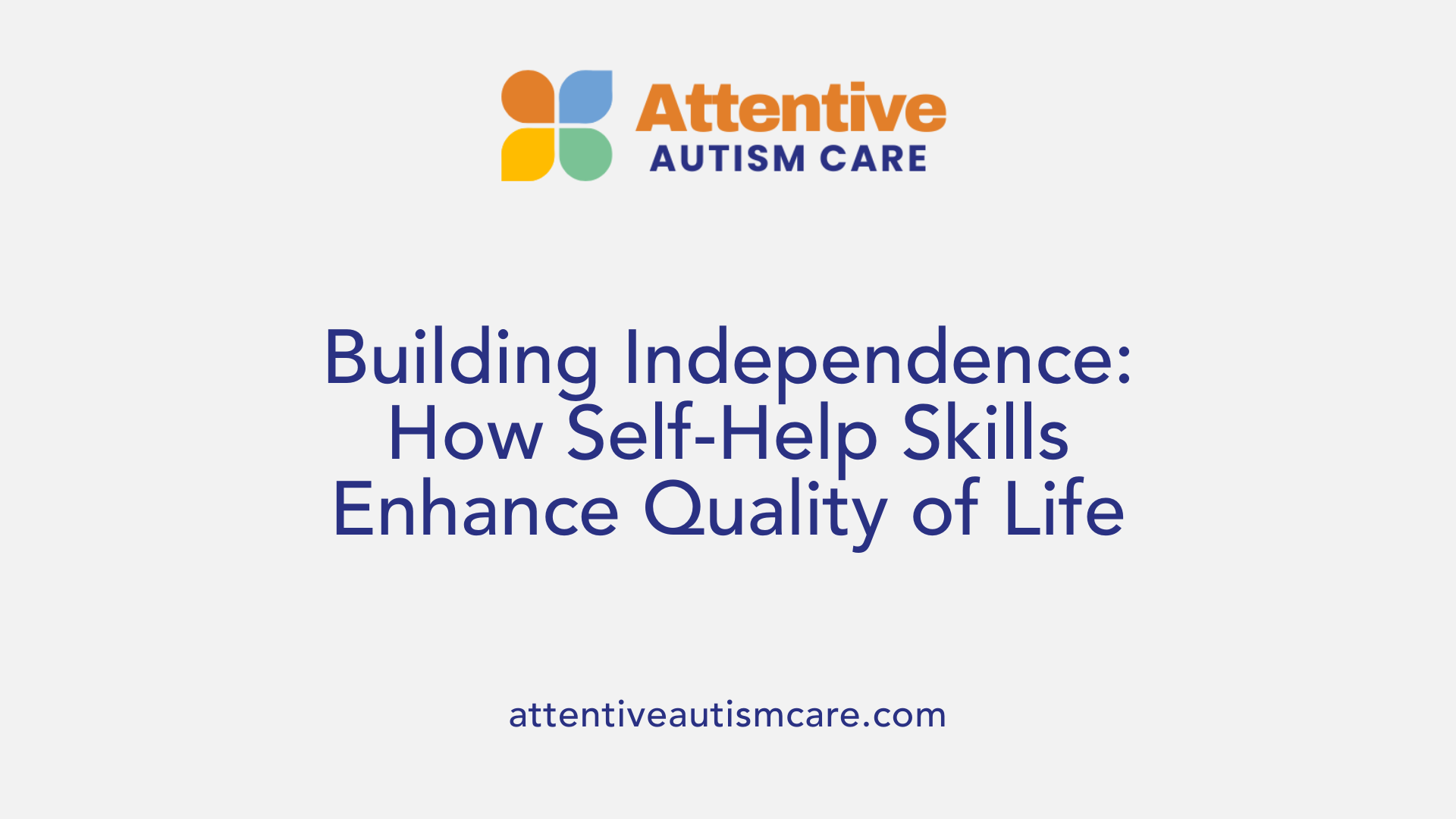
Why are self-help skills important for autistic youth and how can their development be facilitated?
Self-help skills play a crucial role in supporting independence and improving the overall quality of life for autistic young people. These skills include personal care activities like brushing teeth, dressing, grooming, safety awareness, and daily routines, which form the foundation for adaptive functioning. When autistic youth acquire these abilities, they can participate more fully in home, school, and community activities, fostering confidence and self-esteem.
Developing self-help skills is essential not just for everyday independence but also for social integration. When children and adolescents can manage basic routines, they are better equipped to interact socially and participate in community activities, which enhances their sense of belonging.
Facilitating growth in these areas involves a structured, step-by-step approach rooted in applied behavior analysis (ABA). Effective methods include breaking tasks into smaller parts through task analysis, using visual supports like checklists and schedules, and providing prompts that help the individual complete each step. Reinforcement strategies motivate continued progress, and regular assessment ensures that the support provided is appropriate to the learner’s evolving needs.
Collaboration is vital. Caregivers, teachers, and professionals such as Board Certified Behavior Analysts (BCBAs) work together to design personalized teaching plans. They incorporate natural environment teaching, social stories, and visual aids to promote generalization—making sure skills are transferable across different settings.
Overall, early intervention and consistent, tailored instruction significantly boost an autistic person's independence, paving the way for a more confident, autonomous future.
Key Categories of Self-Help Skills
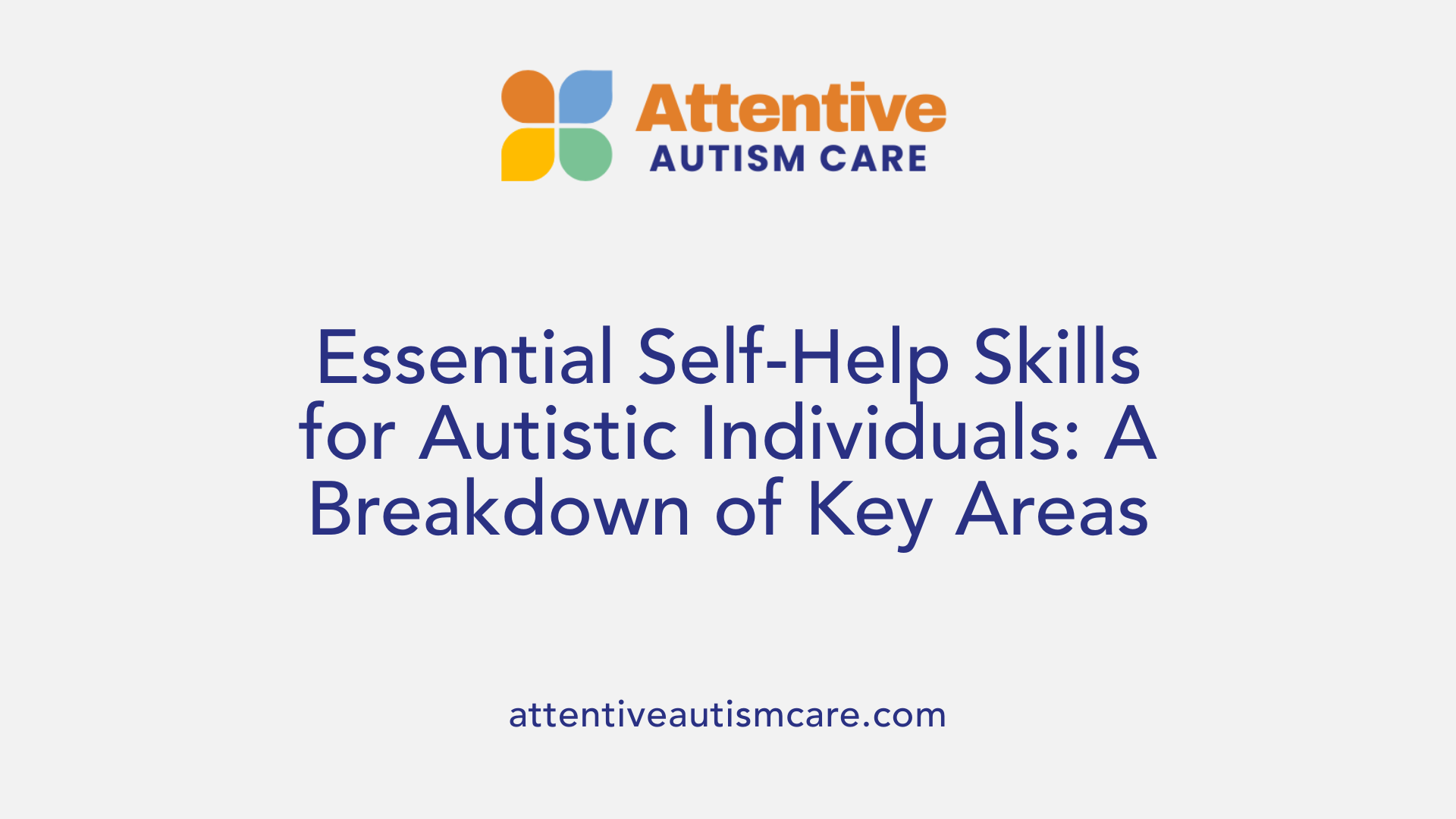 Self-help skills cover a wide range of activities that help individuals, especially those with autism, gain independence and confidence in daily life. These skills include fundamental tasks like self-care, as well as practical activities such as cooking, managing money, shopping, organizing personal space, and transportation.
Self-help skills cover a wide range of activities that help individuals, especially those with autism, gain independence and confidence in daily life. These skills include fundamental tasks like self-care, as well as practical activities such as cooking, managing money, shopping, organizing personal space, and transportation.
Understanding and developing these skills is crucial for fostering autonomy and improving overall well-being. They enable individuals to participate fully in home life, school activities, and community outings, making daily routines smoother and less dependent on caregiver support.
Why are self-help skills important for autistic youth and how can their development be facilitated?
Self-help skills are vital because they directly impact an autistic child's ability to function independently and boost their self-esteem. Building these skills early on lays the foundation for successful adult living and participation in society.
Facilitating development involves a personalized, systematic approach. Techniques like task analysis break down complex activities into manageable steps, making learning more accessible. Reinforcement strategies, modeling, and consistent practice in natural environments ensure skills are acquired and generalized.
Visual tools like schedules, checklists, and social stories serve as effective supports. Collaboration among parents, teachers, and specialists such as behavior analysts consistently reinforces skill-building efforts. Regular assessment of individual progress helps refine teaching methods, ensuring each child receives tailored instruction.
Activities Included in Self-Help Skills:
Here's a quick look at common categories and activities:
| Category | Example Activities | Notes |
|---|---|---|
| Personal Care | Brushing teeth, dressing, hygiene routines | Essential for health and confidence |
| Cooking & Meal Prep | Pouring drinks, simple meal prep | Improves independence at home |
| Money Management | Recognizing coins, basic budgeting | Prepares for financial literacy |
| Shopping | Using a shopping list, paying with cash | Develops functional community skills |
| Organization & Home | Keeping rooms tidy, organizing belongings | Enhances self-management |
| Transportation | Using buses, understanding routes | Enables community access |
Resources for Learning More
For further understanding, resources include local workshops, online webinars about practical life skills, and organizations like Autism Speaks which provide tailored guides.
Supporting independence through these activities not only improves daily functioning but also promotes confidence and self-reliance, setting a foundation for a more autonomous and fulfilling life.
Developmental Timeline and Tailoring Approaches
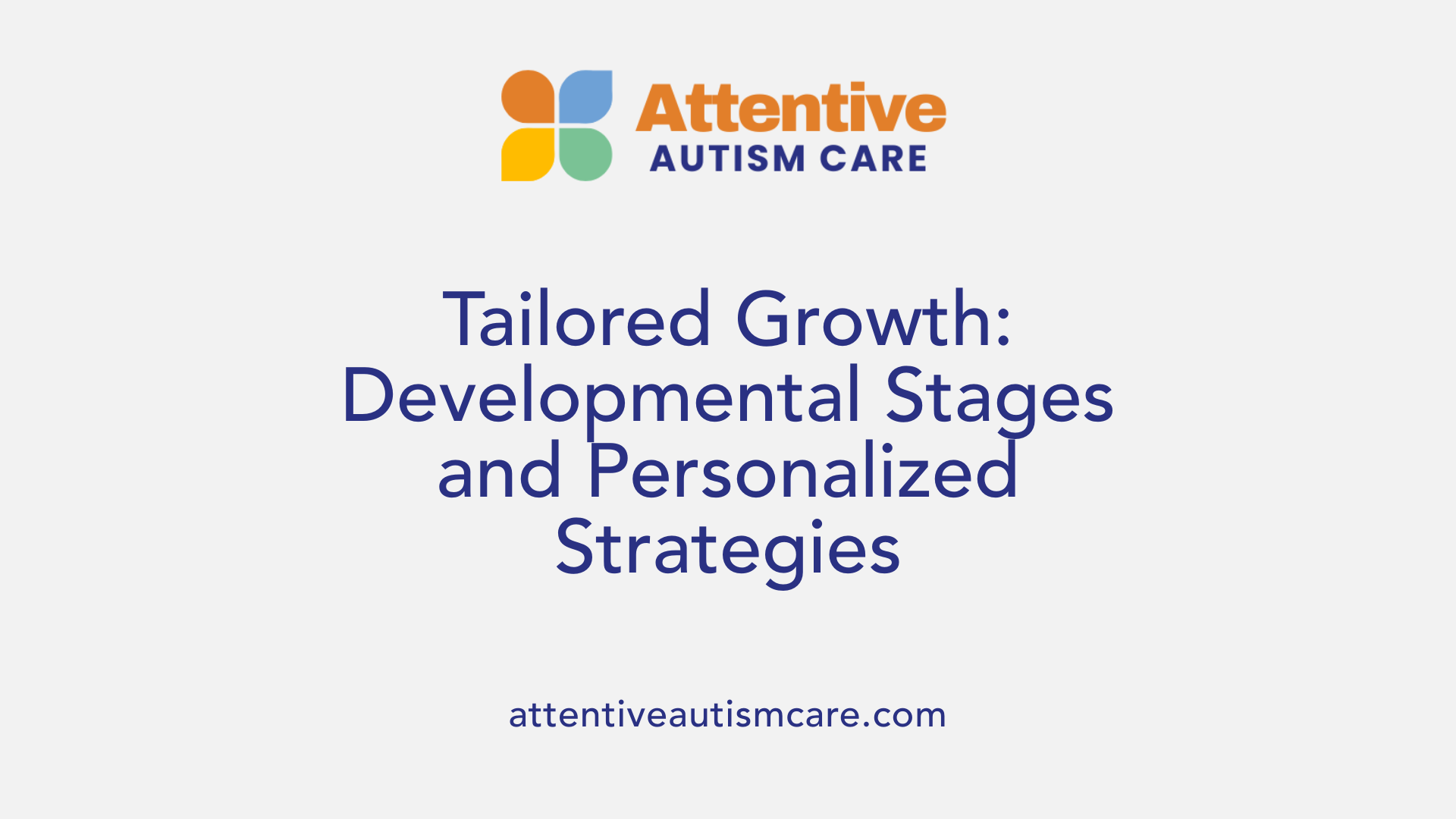
Why are self-help skills important for autistic youth and how can their development be facilitated?
Self-help skills are essential for autistic children and adolescents because they foster independence and self-confidence. These abilities enable individuals to perform daily routines such as bathing, dressing, eating, and managing personal health, which are critical for participating fully in home, school, and community activities.
Developing these skills contributes not only to increased autonomy but also to improved social interactions and self-esteem. When children can manage their own needs, they are more likely to engage confidently in various settings, helping them lead more fulfilling lives.
To support these developments, a structured, personalized approach is necessary. Professionals often recommend techniques based on applied behavior analysis (ABA), which include breaking skills into manageable components, providing prompts and reinforcement, and gradually fading support to promote independence.
Visual supports like charts, checklists, and social stories are often used to facilitate understanding and retention. Practitioners may work in natural environments, such as home or school, to enhance the generalization of skills. Collaboration among caregivers, educators, and specialists ensures consistent teaching and supports ongoing progress assessment.
Age-related stages for acquiring self-help skills
| Age Range | Typical Skills Acquired | Examples | Notes |
|---|---|---|---|
| Preschool (3-5 years) | Basic self-care, dressing, hygiene | Hand washing, zipping jacket | Focus on foundational routines |
| Early Elementary (6-8 years) | Meal help, dressing skills, safety awareness | Using utensils, recognizing dangers | More independence encouraged |
| Late Elementary (9-12 years) | Managing personal hygiene, safety, basic cleaning | Brushing teeth, organizing belongings | Begin fostering responsibility |
| Adolescence & Beyond (13+) | Managing personal care, cooking, money, transportation | Preparing simple meals, using public transit | Emphasis on community integration |
Tailoring goals to individual needs
Every person with autism is unique; their development varies based on cognitive, motor, sensory, and behavioral factors. Setting goals involves assessing current skills, understanding personal interests, and considering specific challenges.
Professionals and caregivers should establish achievable milestones that promote gradual progress. Regular evaluations help in adjusting these goals, ensuring they remain relevant and motivating for the individual.
Monitoring progress and outcomes
Consistent assessment is vital for effective development. This involves observing skill execution, recording IEP (Individualized Education Program) or treatment plan achievements, and gathering caregiver feedback.
Data collection tools and visual supports help in tracking improvements, identifying areas requiring additional focus, and celebrating successes. Adaptive strategies ensure continued growth and support the journey toward greater independence.
Effective Teaching Strategies and Tools
What strategies and methods are effective for developing self-help and independence skills in autistic teenagers?
Supporting autistic teens in gaining independence involves a combination of tailored, evidence-based teaching methods. One of the most effective approaches is applied behavior analysis (ABA), which focuses on breaking down skills into manageable steps through task analysis. This method allows learners to master each component and gradually combine them into complete activities.
Prompting techniques, such as physical, verbal, or visual cues, are used to guide behavior during initial learning stages. Over time, prompts are systematically faded to foster independent performance. Chaining, which involves linking individual steps together into a sequence, helps teens perform complex tasks like cooking or using public transportation.
Visual supports are vital tools in this process. Checklists, schedules, and social stories provide clear, visual representations of routines and steps. These aids help reduce anxiety, clarify expectations, and promote consistency. Teaching in everyday environments—like homes, community centers, or stores—ensures the skills learned are practical and easily transferable.
Assessment tools, such as the Community-Based Skills Assessment (CSA), enable educators and caregivers to identify each teen's current skills and interests. Customizing programs based on these assessments allows for targeted instruction that aligns with individual needs. Regular progress monitoring and flexible adjustments are essential to maintain momentum.
Collaboration between therapists, teachers, and family members reinforces skills across settings. Motivational strategies, like earning preferred activities or rewards, boost engagement and confidence. Additionally, gradually increasing the complexity of tasks supports sustained growth toward independence.
In summary, a systematic blend of structured teaching, visual supports, real-world practice, and ongoing assessment equips autistic teens with essential life skills—building their self-esteem and paving the way for a more autonomous future.
The Role of Visual Supports and Routines in Skill Acquisition
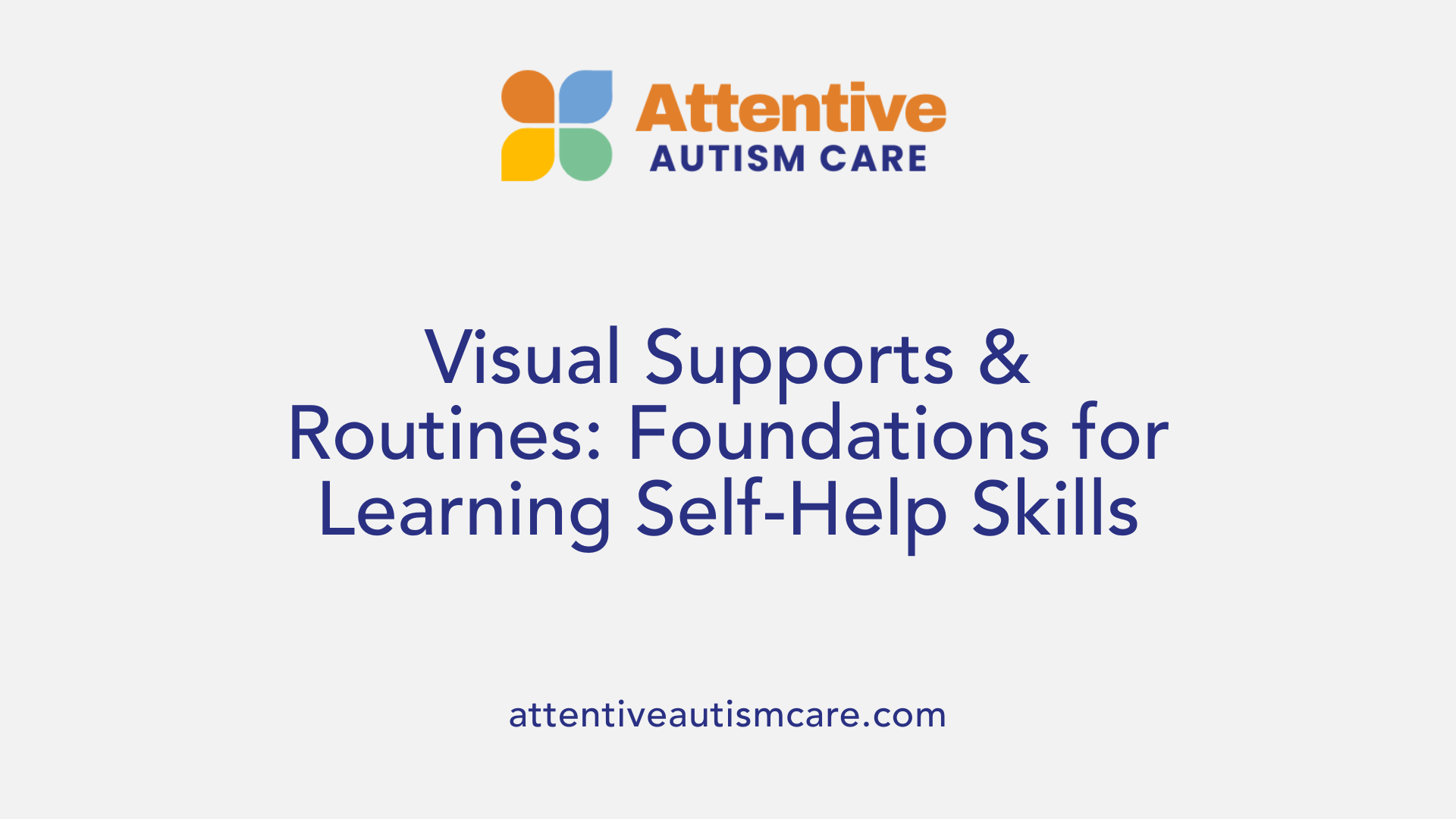
How can self-care and life skills be effectively taught to children and teens with autism?
Teaching self-care and life skills to children and adolescents with autism requires personalized methods that focus on gradual learning and frequent practice. Visual supports such as schedules, checklists, and labels play a crucial role in helping individuals understand routines and complete tasks independently.
Using visual aids not only clarifies steps involved in a task but also reduces anxiety and increases motivation. For example, pictorial checklists for brushing teeth or dressing help children follow consistent routines and achieve independence.
Practicing these skills in natural settings like the home, school, or community is essential. It allows learners to apply what they've learned in real-life scenarios, reinforcing their ability to perform activities such as cooking, shopping, or using transportation.
Breaking down complex skills into manageable parts—known as task analysis—is a useful strategy. This method makes step-by-step learning more approachable and allows caregivers and professionals to monitor progress effectively.
Incorporating behavioral strategies like chaining, prompting, and reinforcement amplifies learning. Prompting—be it physical, visual, or vocal—is gradually faded as the individual masters the skill, fostering true independence.
Collaborating with professionals, such as Board Certified Behavior Analysts (BCBAs), ensures that teaching strategies align with current best practices. These experts can assist in designing individual programs, implementing effective interventions, and troubleshooting challenges.
Overall, combining visual supports with consistent routines, real-life practice, and professional guidance creates a supportive environment that encourages mastery of essential life skills. This approach not only builds independence but also boosts confidence and participation in daily activities.
| Strategy | Description | Benefits |
|---|---|---|
| Visual schedules | Charts depicting daily routines and tasks with pictures or symbols | Improves understanding and independence |
| Checklists | Step-by-step lists for completing activities | Promotes task completion and organization |
| Natural setting practice | Teaching skills in everyday environments related to tasks | Enhances real-world application |
| Task analysis | Breaking skills into component parts | Facilitates gradual mastery |
| Reinforcement techniques | Using rewards to motivate and strengthen desired behaviors | Encourages continued learning |
Visual supports, combined with consistent routines and targeted instruction, significantly aid in developing meaningful life skills for individuals with autism, paving the way for greater independence and confidence.
Building Independence Through Practical Activities and Motivation
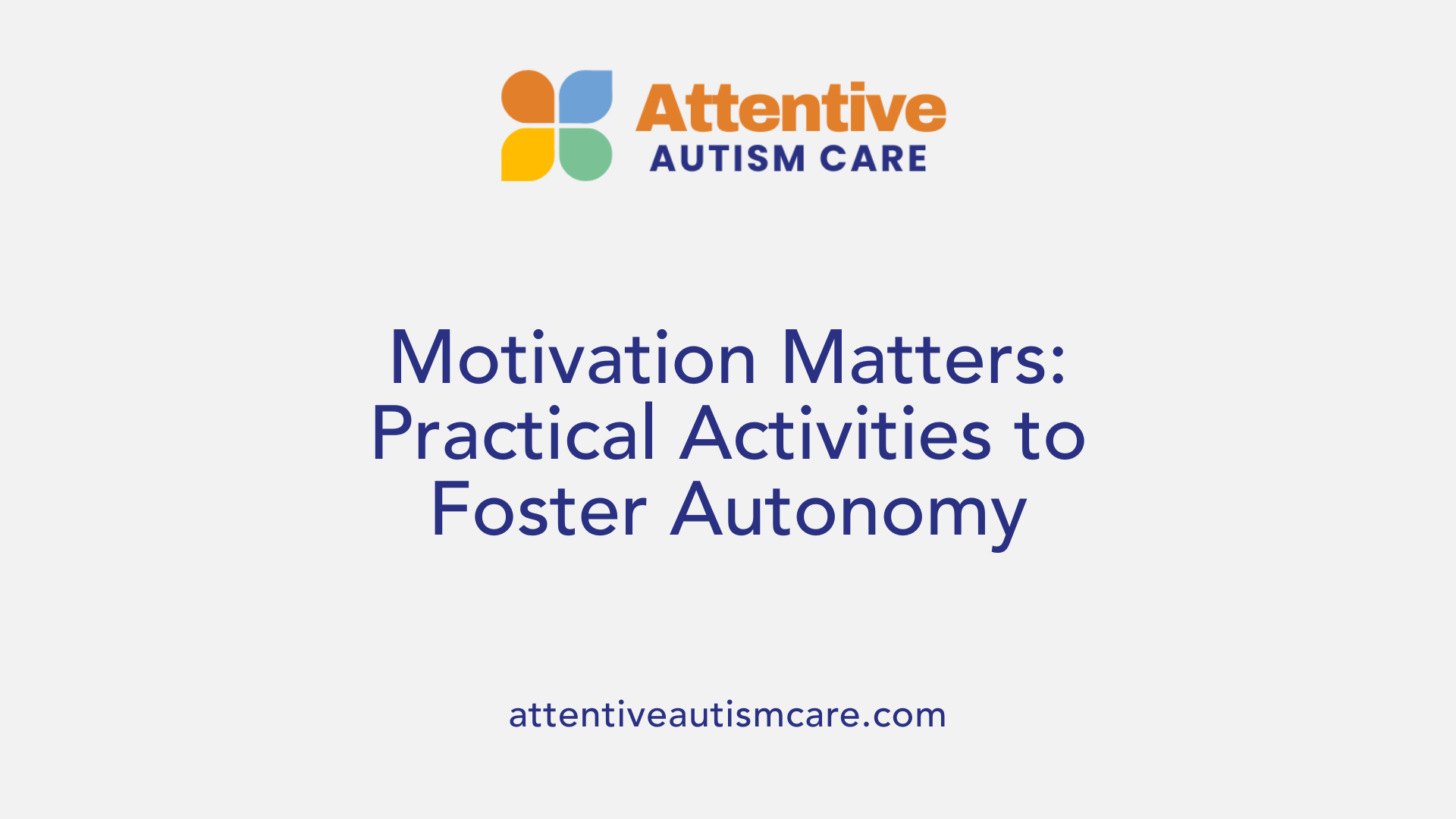 Promoting independence in autistic teenagers involves a blend of concrete activities and motivational strategies that foster growth and self-sufficiency. One effective method is the use of timers, which help teens manage their time during tasks such as self-care routines or chores. Visual timers, in particular, provide clear visual cues that help teens understand how long to stay engaged in a task and transition smoothly between activities.
Promoting independence in autistic teenagers involves a blend of concrete activities and motivational strategies that foster growth and self-sufficiency. One effective method is the use of timers, which help teens manage their time during tasks such as self-care routines or chores. Visual timers, in particular, provide clear visual cues that help teens understand how long to stay engaged in a task and transition smoothly between activities.
Engaging teens in functional activities—like cooking simple meals, doing household chores, or managing personal finances—builds practical skills essential for daily independence. These activities should be taught in natural, real-life settings that mirror the situations teens will encounter outside structured therapy sessions. For example, practicing money handling at the grocery store or planning a route using public transportation in the community allows skills to transfer effectively.
Positive reinforcement is a cornerstone of motivating teens. Celebrating small successes, such as correctly zipping a jacket or pouring a drink, boosts confidence and encourages continued effort. Rewards that align with personal interests—like earning preferred activities or tokens—help maintain engagement and reinforce skill acquisition.
To promote skill transfer and maintain motivation, it's important to incorporate a variety of teaching strategies. Chaining tasks—breaking down complex activities into manageable steps—and gradually fading prompts ensure teens develop independence steadily. Combining these with visual supports such as checklists, visual schedules, and social stories helps clarify expectations and procedures.
Use of timers, functional activities, positive reinforcement: Regularly incorporating these tools creates an engaging learning environment. For example, a visual schedule with pictures and timed activities can guide teens through daily routines, increasing independence.
Promoting motivation and skill transfer: Encouraging teens to practice skills across different settings, with varied prompts and reinforcement, enhances the likelihood that they will generalize these skills and apply them in real-world contexts.
By integrating these strategies with ongoing assessment and collaboration among caregivers, educators, and professionals, it is possible to foster meaningful progress, confidence, and independence in autistic adolescents. This structured yet adaptable approach supports their development into self-reliant adults ready to navigate life’s challenges with competence.
Fostering Growth and Independence in Autistic Teens
By integrating evidence-based strategies, utilizing visual supports, engaging in consistent practices, and collaborating with professionals and families, caregivers can effectively support the development of vital self-help skills in autistic teens. Early intervention, ongoing assessment, and tailored interventions can empower individuals to achieve greater independence, enhance self-esteem, and prepare them for a successful transition into adulthood and community participation.
References
- Life skills for autism
- How Can I Promote Self-Help Skills in Clients with Autism?
- The Ultimate Guide to Self-Help Skills for Autism
- Helping Autistic Teens Build Independence and Life Skills
- Expert Q&A: Teaching self-care skills to autistic youth with ...
- Self-Help Skills for Kids & Teens With Autism
- Self-Care Skills for Children with Autism
- Life skills for autism



































































































